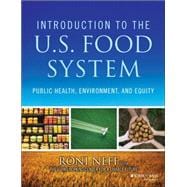Introduction to the US Food System: Public Health, Environment, and Equity is a comprehensive and engaging textbook that offers students an overview of today's US food system, with particular focus on the food system's interrelationships with public health, the environment, equity, and society. Using a classroom-friendly approach, the text covers the core content of the food system and provides evidence-based perspectives reflecting the tremendous breadth of issues and ideas important to understanding today's US food system. The book is rich with illustrative examples, case studies, activities, and discussion questions.
The textbook is a project of the Johns Hopkins Center for a Livable Future (CLF), and builds upon the Center's educational mission to examine the complex interrelationships between diet, food production, environment, and human health to advance an ecological perspective in reducing threats to the health of the public, and to promote policies that protect health, the global environment, and the ability to sustain life for future generations.
Issues covered in Introduction to the US Food System include food insecurity, social justice, community and worker health concerns, food marketing, nutrition, resource depletion, and ecological degradation.
- Presents concepts on the foundations of the US food system, crop production, food system economics, processing and packaging, consumption and overconsumption, and the environmental impacts of food
- Examines the political factors that influence food and how it is produced
- Ideal for students and professionals in many fields, including public health, nutritional science, nursing, medicine, environment, policy, business, and social science, among others
Introduction to the US Food System presents a broad view of today's US food system in all its complexity and provides opportunities for students to examine the food system's stickiest problems and think critically about solutions.








